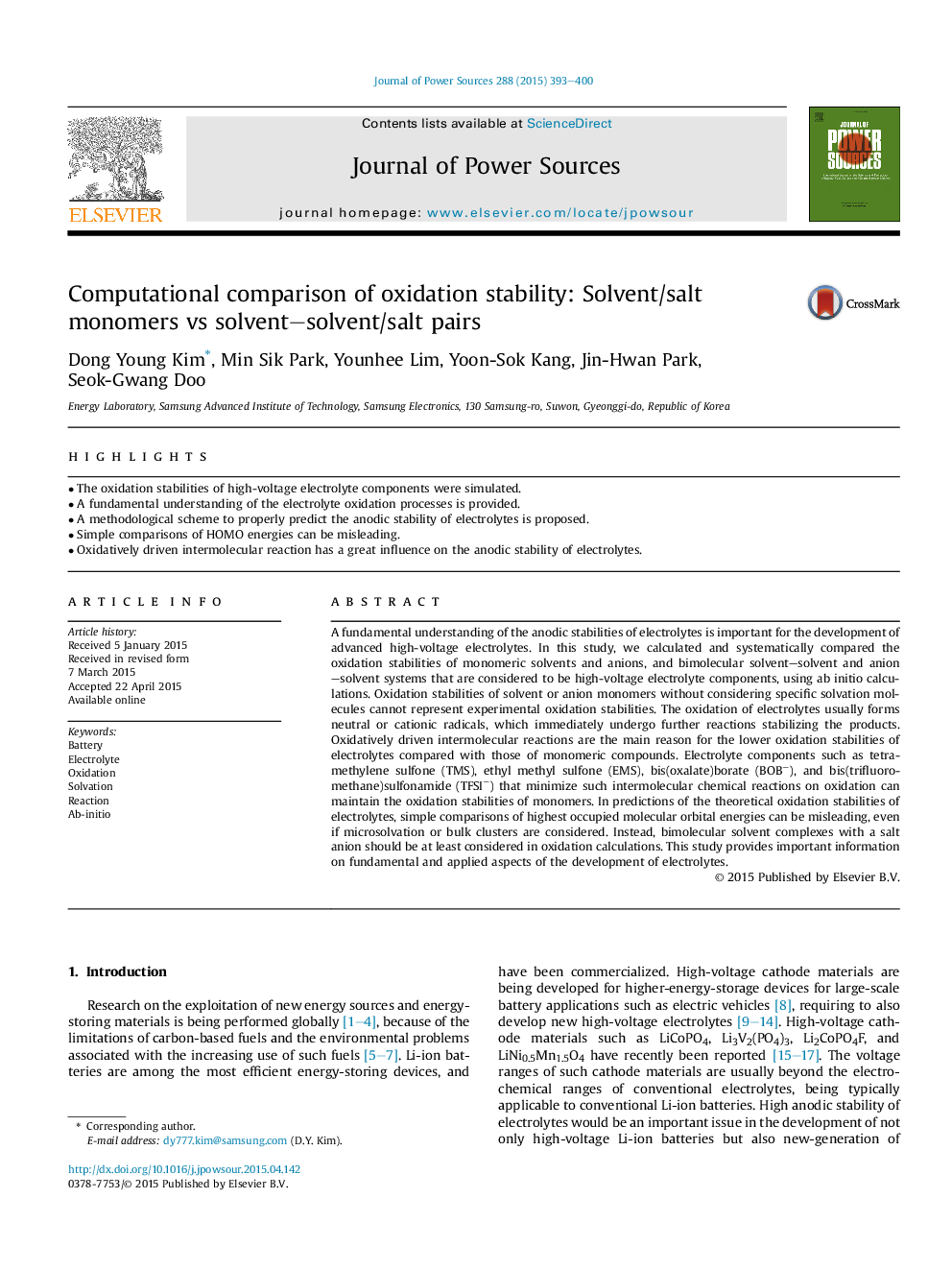| Article ID | Journal | Published Year | Pages | File Type |
|---|---|---|---|---|
| 7732201 | Journal of Power Sources | 2015 | 8 Pages |
Abstract
A fundamental understanding of the anodic stabilities of electrolytes is important for the development of advanced high-voltage electrolytes. In this study, we calculated and systematically compared the oxidation stabilities of monomeric solvents and anions, and bimolecular solvent-solvent and anion-solvent systems that are considered to be high-voltage electrolyte components, using ab initio calculations. Oxidation stabilities of solvent or anion monomers without considering specific solvation molecules cannot represent experimental oxidation stabilities. The oxidation of electrolytes usually forms neutral or cationic radicals, which immediately undergo further reactions stabilizing the products. Oxidatively driven intermolecular reactions are the main reason for the lower oxidation stabilities of electrolytes compared with those of monomeric compounds. Electrolyte components such as tetramethylene sulfone (TMS), ethyl methyl sulfone (EMS), bis(oxalate)borate (BOBâ), and bis(trifluoromethane)sulfonamide (TFSIâ) that minimize such intermolecular chemical reactions on oxidation can maintain the oxidation stabilities of monomers. In predictions of the theoretical oxidation stabilities of electrolytes, simple comparisons of highest occupied molecular orbital energies can be misleading, even if microsolvation or bulk clusters are considered. Instead, bimolecular solvent complexes with a salt anion should be at least considered in oxidation calculations. This study provides important information on fundamental and applied aspects of the development of electrolytes.
Related Topics
Physical Sciences and Engineering
Chemistry
Electrochemistry
Authors
Dong Young Kim, Min Sik Park, Younhee Lim, Yoon-Sok Kang, Jin-Hwan Park, Seok-Gwang Doo,
